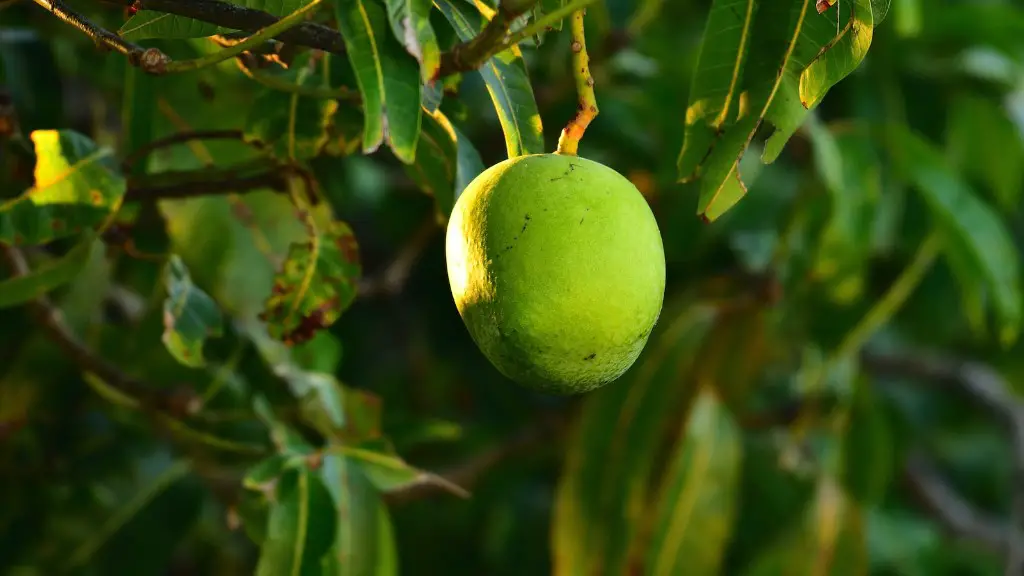Inducing flowering in lemon trees is not difficult and can be done fairly easily if one has the correct know-how. Preparation is key and one must have the right environmental conditions in order to ensure the best possible flowering results. Here’s how to do it:
Firstly, it’s important to make sure the lemon tree is growing in an optimal environment for flowering. This means keeping the temperature above 60°F and ensuring that the tree receives plenty of sunlight and an ample amount of water. If the tree is planted in an unsuitable environment, flowering will be difficult to induce.
Next, it’s important to fertilize the lemon tree. Using a fertilizer specifically designed for citrus trees will give the tree the best chance of flowering. Additionally, one should avoid over-watering the tree as this can prevent the lemon tree from producing blooms.
Thirdly, pruning is an essential step in inducing flowering in lemon trees. Pruning the tree of dead branches, leaves, and excessive growth can help promote flowering and ensure the tree has room to produce new blossoms. Additionally, make sure to remove any disease-ridden branches or leaves.
Fourthly, one should spray the lemon tree with a chelated pesticide or insecticide to protect the tree from pests. Be sure to use an organic or earth-friendly product that is safe for lemon trees.
Fifthly, apply compost to the root system of the tree. Compost will help increase the fertility of the soil and provide a boost of nutrient to the tree, which should help promote flowering.
Finally, keep the lemon tree’s plant roots healthy by mulching around the base of the tree. Mulch can help retain moisture in the soil as well as provide nutrients to the root system.
Fertilizing
Fertilizing the lemon tree is an essential step in inducing flowering. It’s important to apply the right fertilizer in order to ensure the best blooming results. Look for a fertilizer that is specially formulated for citrus trees, as this will help provide the necessary nutrients for the tree to bloom. Apply the fertilizer according to the manufacturer’s instructions, as overfertilizing can cause damage to the tree.
Additionally, it’s important to fertilize during the warmer months when the tree is actively growing and producing new blooms. Avoid fertilizing the tree in winter, as the cold temperatures can deplete the nutrients from the soil.
Finally, one should always use a product specifically designed for citrus trees. With the wrong type of fertilizer, one may risk damaging the tree and preventing it from flowering.
Watering
Watering the lemon tree correctly is essential in inducing flowering. The tree needs an adequate amount of water to produce blooms, but too much can prevent the tree from flowering. If a lemon tree is planted in too dry of an environment, the tree cannot absorb enough water to produce blooms. Additionally, water the tree evenly and deeply, rather than frequently and shallowly, to prevent the roots from drying out.
Furthermore, once the tree is producing blooms, keep an eye on water levels to ensure the tree doesn’t become too dry. If the tree is not receiving enough water, the flowers may start to drop and the buds may not open up. Make sure to provide the tree with the right amount of water by checking the soil regularly.
Finally, when watering the lemon tree, be sure to use a watering can or hose to water the entire tree. This will help the tree absorb more water and help induce the best possible flowering results.
Pruning
Pruning is an essential step when trying to induce flowering in lemon trees. The tree must be pruned regularly to ensure the best blooming results. Pruning the tree will help promote new growth and help open up the tree, which will in turn help induce flowering.
When pruning, make sure to cut away any dead leaves, branches, or other excessive growth. Additionally, be sure to keep an eye out for any disease-ridden branches or leaves and remove them immediately. Pruning the tree of unhealthy parts will help induce flowering and help ensure the tree remains healthy.
Finally, pruning should be done during the warmer months when the tree is actively growing. Avoid pruning the tree during the colder months as this can stunt the current growth of the tree and prevent it from flowering as much as it could.
Pesticides
Spraying the lemon tree with the right kind of pesticide or insecticide is essential for inducing flowering. Certain pests can cause damage to the tree and inhibit flowering, so spraying it regularly with an organic and earth-friendly product will help keep the tree free from pests.
When using a pesticide, be sure to use it according to the manufacturer’s instructions. Additionally, make sure to use a product specifically designed for lemon trees as this will help ensure the tree is protected without harming it or preventing it from flowering.
Finally, make sure to regularly inspect the tree for any signs of pests and spray the tree if any are found. By controlling pest levels, one can ensure the best possible flowering results.
Compost
Adding compost to the root system of a lemon tree is important when trying to induce flowering. Compost is composed of organic matter, which helps to increase the fertility of the soil, as well as provide additional nutrients to the tree. Compost can help promote flowering and ensure the tree has what it needs to produce healthy blooms.
When applying compost, be sure to distribute it evenly and lightly around the base of the tree. Additionally, when applicable, make sure to use an organic and earth-friendly compost as this will help ensure the tree retains all the nutrients it needs.
Finally, it’s important to apply compost regularly, especially if the tree is producing blooms. Applying the compost can help give the lemon tree the extra boost it needs to produce healthy blooms and encourage the best possible flowering results.
Mulch
Mulching around the base of the tree is important for keeping the root system of the lemon tree healthy and promoting flowering. Mulch can help retain moisture for the tree, as well as provide additional nutrients for the tree to absorb.
When mulching, make sure to use an organic and earth-friendly mulch in order to provide the best results. Additionally, make sure to spread the mulch evenly and lightly around the base of the tree, avoiding the area directly beneath the trunk.
Finally, once the mulch has been applied, be sure to check it regularly to ensure it has not shifted or been washed away. Replacing the mulch regularly will help promote flowering and ensure the best possible results.





